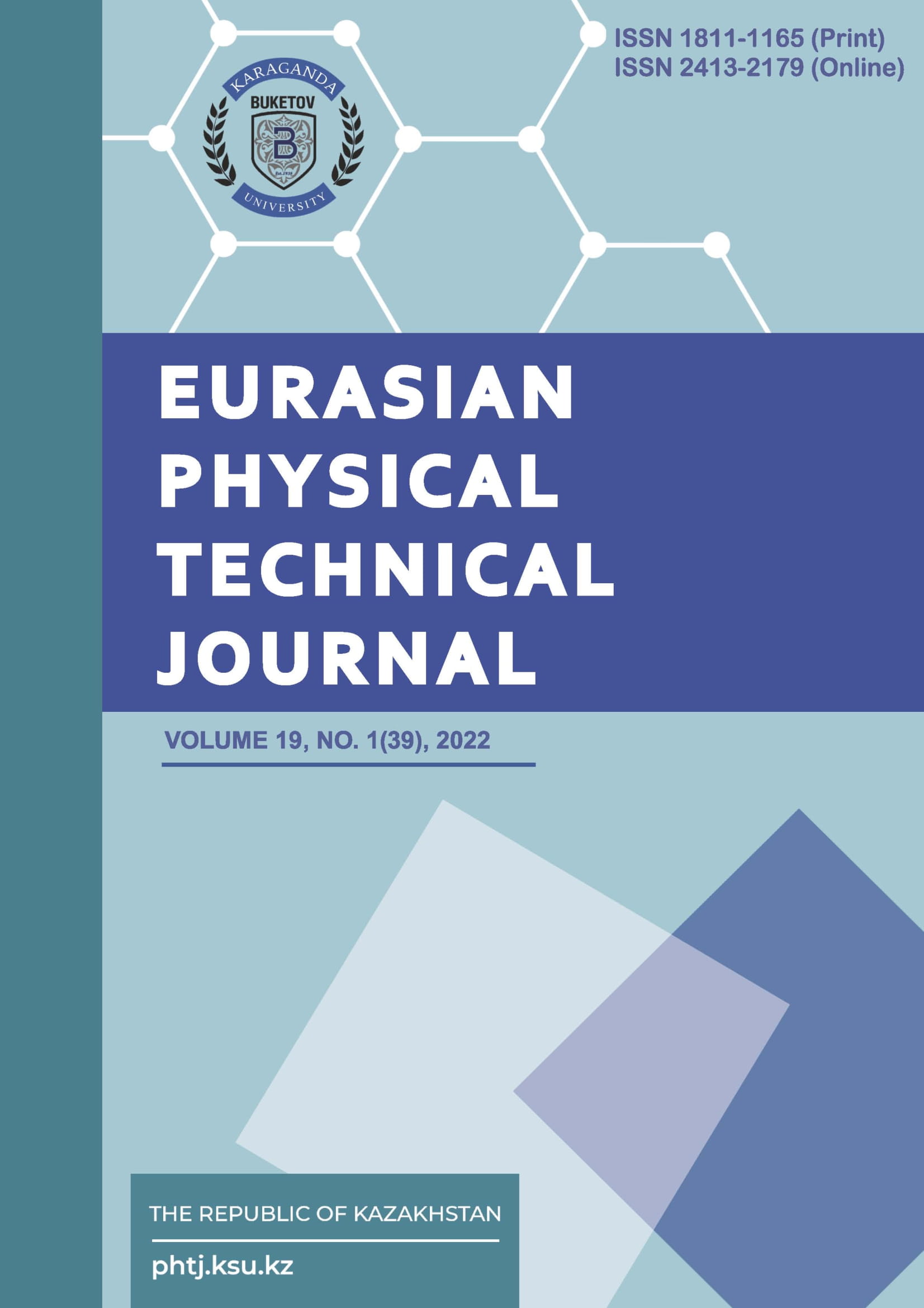INFLUENCE OF PHTHALOCYANINE NANOSTRUCTURES ON OPTICAL AND PHOTOVOLTAIC CHARACTERISTICS OF A POLYMER SOLAR CELL
DOI:
https://doi.org/10.31489/2022No1/26-33Keywords:
semiconductor polymers, metallophthalocyanines, generation and transport of charge carriers, photovoltaics.Abstract
Nanocomposite polymer solar cells were obtained. Nanostructures of phthalocyanines were added to a mixture of photoactive layer at a concentration of 0.5%. The photoactive layer was applied by centrifugation at a rotation speed of 1500 rpm. Atomic force microscope images of the surface of the films were measured. Absorption spectra of composite films were measured. It was found that the introduction of phthalocyanine nanostructures into the photoactive photoactive layer leads to a broadening of the spectrum and an increase in the optical density at the absorption maximum by 2.1 times for nanorods and 1.9 times for nanoparticles. The current-voltage characteristics of composite organic solar cells were measured. To do this, an aluminum electrode with a thickness of 100 nm was sprayed onto the surface of the photoactive layer at 10-5Torr. It is shown that when the photoactive layer was doped with nanorods and phthalocyanine nanoparticles, the short-circuit current density of the current-voltage characteristics increased by 8% and 5%, respectively, and the efficiency value increased to 4.58% and 4.51%, respectively. The impedance spectra of composite organic solar cells were measured. Analysis of hodographs of nanocomposite films showed that doping of the photoactive layer with nanorods and phthalocyanine nanoparticles leads to an increase in the diffusion length by 2.2 times and 1.8 times, respectively, and an increase in the mobility of charge carriers by 1.4 times and 1.2 times.
References
"1 Brau A., Farges J.P. Organic Semiconductors. Org. Conduct. Fundam. Appl. Marcel Dekker, 1994, pp.311–357.
Hohnholz D., Steinbrecher S., Hanack M. Applications of phthalocyanines in organic light emitting devices. Journal of Molecular Structure, 2000, Vol. 521, pp. 231-237. doi: 10.1016/S0022-2860(99)00438-X.
Itoh E., Ohmori Y., Miyairi K. Photovoltaic Properties of Organic p-n Junction Devices Consisting of Phthalocyanine and n-Type Porphyrin Deposited on an n-Type TiO2 Layer. Japanese J. Appl. Physics. Part 1 Regul. Pap. Short Notes Rev. Pap. 2004, Vol. 43, Is.2., pp 817-821. doi: 10.1143/JJAP.43.817.
Wagenpfahl A., Deibel C., Dyakonov V. Organic solar cell efficiencies under the aspect of reduced surface recombination velocities. IEEE J. Sel. Top. Quantum Electron. 2010, Vol.16, Is.6, pp. 1759-1763.
Bi X., WuZ., ZhangT., AnC., XuY., MaK., et al. Reduced Nonradiative Recombination Energy Loss Enabled Efficient Polymer Solar Cells via Tuning Alkyl Chain Positions on Pendent Benzene Units of Polymers. ACS Appl. Mater. Interfaces. 2020, Vol.12, pp. 24184-24191. doi: 10.1021/acsami.0c04397.
Kim K., Ihm K., Kim B. Surface Property of Indium Tin Oxide (ITO) After Various Methods of Cleaning. Acta Physica Polonica. 2014, Vol. 127, No. 4, pp. 1176-1179. doi: 10.12693/APhysPolA.127.1176.
Hashizume M., Kunitake T. Preparation and functionalization of self-supporting (polymer/metal oxide) composite ultrathin films. RIKEN Rev. 2001, Vol. 38, pp. 36–39.
Pakhomov G.L., Gaponova D.M., Lukyanov A.Yu., Leonov E. S. Luminescence in phthalocyanine thin films. Solid state physics. 2005, Vol.47, No.1, pp.164-167.
Zeinidenov A.K., Aimukhanov A.K., Kambar D.S., Ilyassov B.R., Zavgorodniy A.V. Effects of phthalocyanine nanostructure on photovoltaic performance of its polymer composite thin films. Materials Chemistry and Physics. 2021, Vol. 267, p.124680. doi: 10.1016/j.matchemphys.2021.124680.
Gregg B.A., Hanna M.C. Comparing organic to inorganic photovoltaic cells: Theory, experiment, and simulation. Journal of Applied Physics. 2003, Vol.93, Is.6, pp. 3605 - 3614. doi: 10.1063/1.1544413.
Ellison D.J., Kim J.Y., Stevens D.M., Frisbie C.D. Determination of quasi-fermi levels across illuminated organic donor/acceptor heterojunctions by kelvin probe force microscopy. J. Am. Chem. Soc. 2011, Vol.133, Is.35, pp.13802-13805. doi: 10.1021/ja2034574.
Yang H., Song Q., Lu Z., Guo C., et al. Electrochemically polymerized nanostructured poly (3.4-ethylenedioxythiophene)-poly(styrenesulfonate) buffer layer for a high performance polymer solar cell. Energy and Environ. Science. 2010, Vol. 3, pp.1580-1586. doi: 10.1039/C0EE00117A.
Yuan X., Song C., Wang H., Zhang J. EIS Equivalent Circuits In Electrochemical Impedance Spectroscopy in PEM Fuel Cells. California: Springer, 2010, doi:10.1007/978-1-84882-846-9.
Zavgorodniy A.V., Aimukhanov A.K., Zeinidenov A.K., et al. The influence of the magnetic field on the current-voltage characteristics of cupc nanostructures. Eurasian phys. tech. j. 2019, Vol.16, No.1(31), P.54-61.
Aimukhanov A.K., Zeinidenov A.K., Ilyassov B.R., Zavgorodniy A.V. The research of photo-electrophysical properties of cobalt phthalocyanine film. Eurasian phys. tech. j. 2019, Vol.16, No.2(32), P.16-20."















